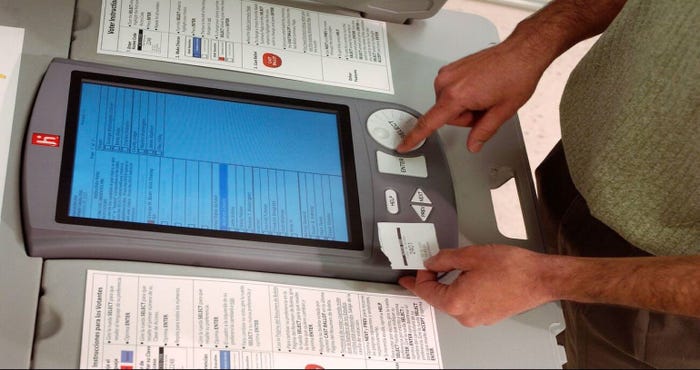Low Tech Wins Decisively On Election Day
Millions of Americans will descend on the polls this Election Day, casting votes on equipment that is often unabashedly considered low tech.

Recent elections have quickly become a target of accusations that voting was conducted improperly and open to abuse and fraud. Critics questioned whether all votes were properly accounted for, including charges that some people voted illegally. The outrage in the aftermath of the most recent presidential election likely fueled the fire of some political movements and contributed to the infamous storming of the Capitol in early 2021.
Underneath all the controversy are election systems that run on largely outdated technology that is not likely to change soon.
While the Internet has pervaded our lives in a manner few could have foreseen years ago, voting is one area where cyberspace has not touched. There is no online voting in the U.S., and globally online voting has been implemented only in a few countries on a selective basis for say, people with disabilities or for regional elections.
Not surprisingly, the herculean task of setting up and implementing an online voting system that is secure and reliable, on even a regional basis in the U.S. presents a stiff challenge. The potential for security breaches and malware intrusions comes into play, whether online from behind a firewall or on mobile app. On top of that, privacy concerns emerge as voters wonder about who’s tracking their voting activityꟷmuch less of an issue with current low-tech voting technology.
Moreover, there are still many households without Internet access and limited bandwidth in many remote regions, which then raises the issue of providing equal access to disenfranchised voters.
The notion of keeping things as simple as possible has long applied to election technology. Not surprisingly, paper ballots that were manually counted was employed in early days of voting. That ancient technique has not entire disappeared; printed paper ballots have been used from time to time in various elections due to mechanical or electronic voting machines malfunctioning.
While the equipment used to cast votes has been updated over the years, the transition has been anything but fast or smooth. State and local governments are often reluctant to invest in unproven technology for a process that has potentially important ramifications for their constituents, preferring to stay with tried-and-true equipment and procedures.
The human element also plays a huge role in keeping things simple and stupid. For one, older Americans or those who do not interact with technology on daily basis are likely to be intimidated by casting votes on an electronic machine. Updated voting technology has met with some backlash.
Moreover, poll workers at many election locations are themselves elderly or homeworkers that may not be technically-literate.
Long life for lever machines
The voting technology most older Americans remember are the mechanical, lever-activated voting machines that first emerged in the early 1900s. These machines were often in individual voting booths covered by curtains. With these machines, the voter would move the lever next to the person he or she wants to vote for. When finished, the voter would press another lever to record the vote and open the curtain to signify he or she has finished voting.
While these machines had their issues and started to be phased out in recent decades, they had a long life in some places, such as New York State, which only phased them in 2010 in favor of optically scanned ballots.

Punch Cards
Punch cards are probably a familiar sight to anyone who worked with computers in the 1960s and 1970s. Well, punch cards also had a stint in voting systems during the latter part of the last century. With punch card systems, voters punch holes in cards using a supplied punch device, to indicate votes for their chosen candidates. These cards are then fed into either a computer vote tabulating device at the polling place, or alternatively, placed in a ballot box which is later transported to a central location for tabulation.
Punch cards and computer tally machines were first used in the U.S. for the 1964 Presidential primary election in two counties in the State of Georgia. The Votomatic was the last punch card voting system used in American elections. They were last used in 2 counties in Idaho in the 2014 General Election.

Optical scanning
As early as the 1960s, technology was developed that enabled paper ballots filled with pencil or ink to be optically scanned rather than hand-counted. According to Wikipedia, in 1980, about 2% of votes used optical scanning; this increased to 30% by 2000 and 60% by 2008.
New York State, for instance, replaced ancient lever-actuated machines in 2010 with optical scanners. The voter would use a pencil to mark a paper ballot, bring it to scanner, then feed it in to record the vote. Some issues include ballots not properly marked or voters confused on where or how to record their ballots at the scanners.

DRE Voting Machine
In the 1970s, the final major voting technology for the U.S was developed, the DRE voting machine. According to Wikipedia, less than 1% of ballots were cast with DRE. Prevalence grew to 10% in 2000, then peaked at 38% in 2006. Because DREs are fully digital, with no paper trail of votes, backlash against them caused prevalence to drop to 33% in 2010.

About the Author(s)
You May Also Like





